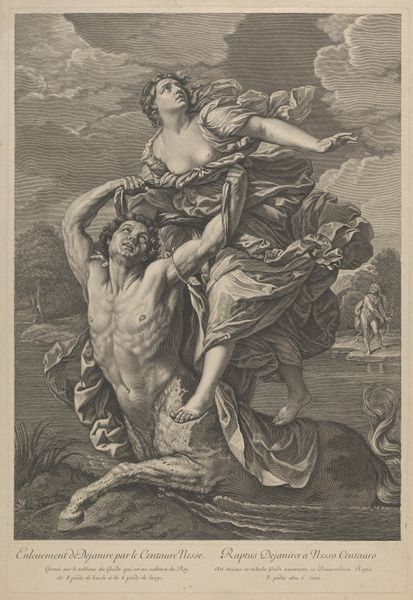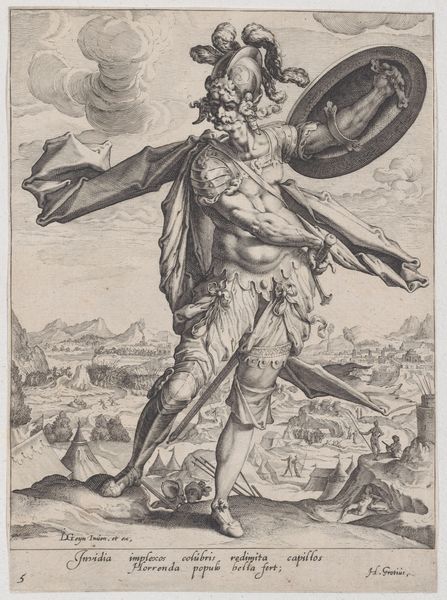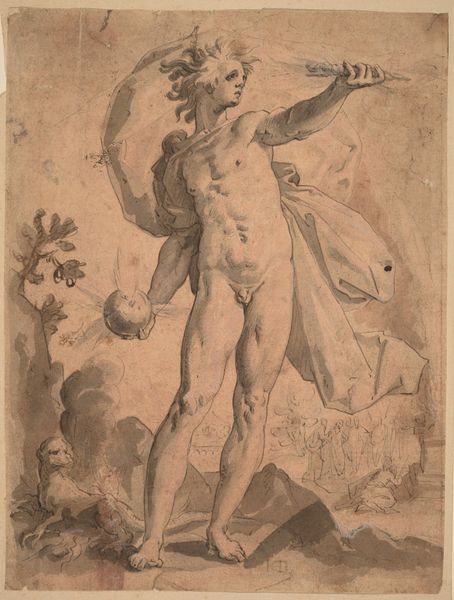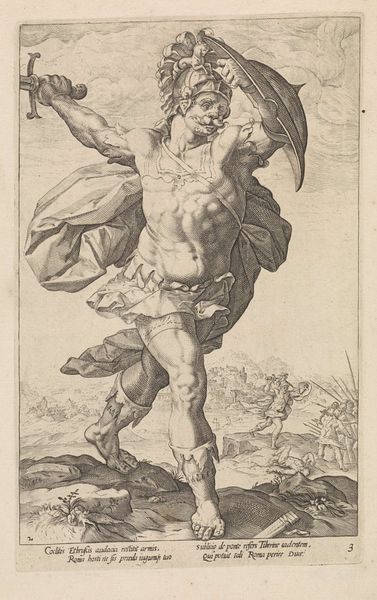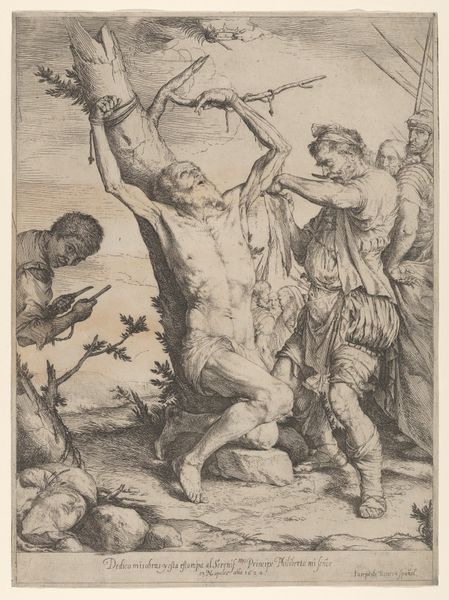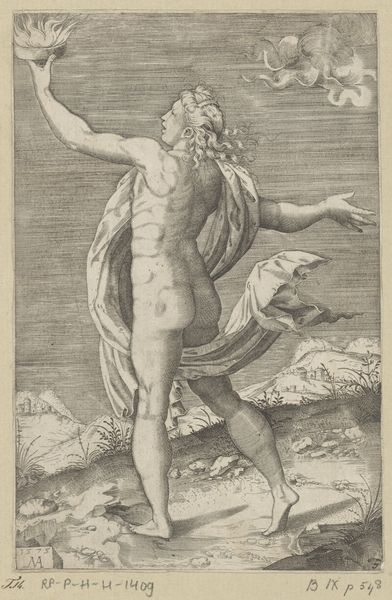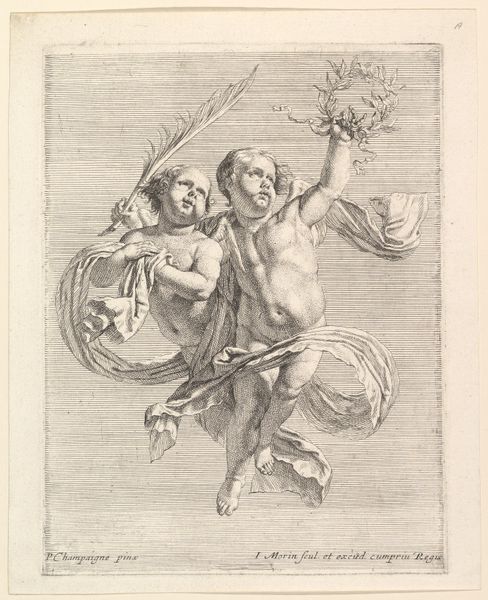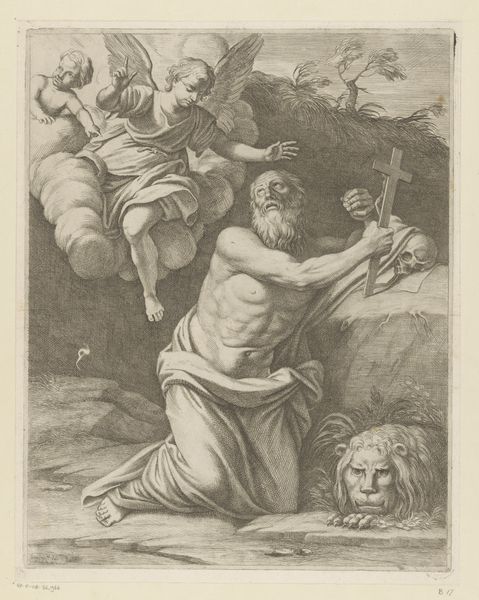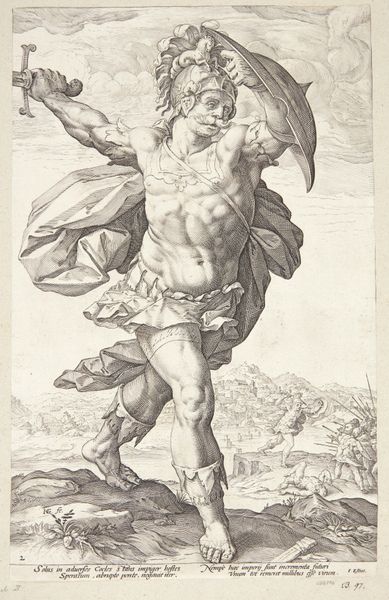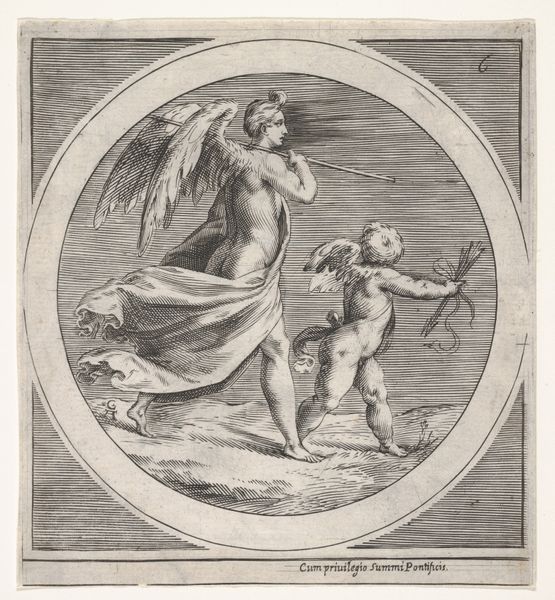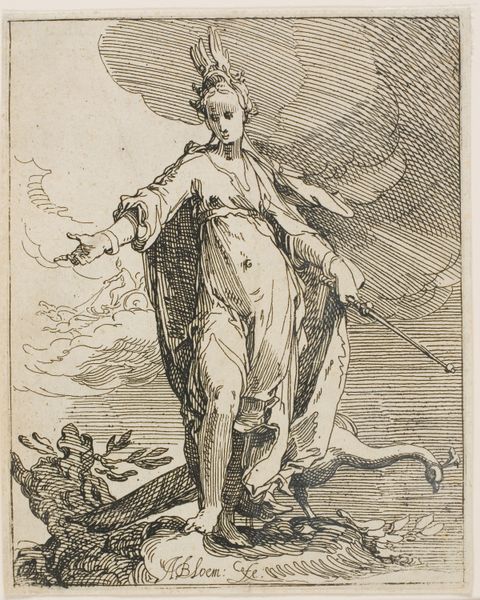
Judith with the Head of Holofernes, standing nude in a barren landsape 1570 - 1615
0:00
0:00
drawing, print
#
drawing
#
allegory
# print
#
mannerism
#
figuration
#
personal sketchbook
#
history-painting
#
italian-renaissance
#
nude
Dimensions: Sheet: 8 9/16 × 5 1/16 in. (21.8 × 12.8 cm)
Copyright: Public Domain
Curator: The stark composition certainly strikes a powerful chord, doesn't it? Before us, we have Cherubino Alberti’s print, dating from 1570 to 1615, titled *Judith with the Head of Holofernes, standing nude in a barren landscape*. Editor: Stark is indeed the word. It’s... unsettling. Judith’s pose, the lifeless head, and the landscape devoid of comfort create a mood of harsh victory. The way she’s stepping on Holofernes gives a dominating effect. It is visually dramatic! Curator: Consider Alberti’s Mannerist style, the artful exaggeration of form. Look closely at the sinuous lines of Judith's body, and the contrapposto pose—a deliberate display of aesthetic refinement rather than naturalism. The very intentional juxtaposition with the severed head is central to this reading. Editor: How does the heroic depiction of Judith square with the realities of her time? The social commentary intrigues me. Judith, celebrated as a woman acting courageously to save her people from a brutal enemy. Does this capture social power, or emphasize traditional patriarchal roles? Curator: These issues were indeed a hot-button question during the Renaissance! The nude form itself signifies a return to classical ideals, a demonstration of technical skill in representing the human figure in art, and in its idealized depiction, presents an intellectual idea. Note the detail in the drapery, its skillful rendering almost sculptural. Editor: Interesting. But thinking about it politically, the emphasis on Judith's nudity also makes me wonder how Alberti and his intended audience perceived her role as a powerful woman. Were they celebrating her strength, or sexualizing her triumph within the context of war? Curator: That reading is entirely viable! It illustrates the multifaceted nature of the work. Even the seemingly desolate landscape is doing ideological work: reinforcing this idea of the 'otherness' of Judith's act, the removal of ethics through brutal conquest. Editor: Seeing it that way, with her stepping triumphantly into our sight-line, does Alberti subtly celebrate Judith or scrutinize it for later eras to question. These social readings change the piece! Curator: Precisely, which leads to questions over the nature of victory, itself. A potent symbol, laden with both historical and art historical resonances. It demonstrates the way Renaissance art synthesizes classical and Christian themes through idealized beauty and allegory. Editor: Indeed, thank you, I leave with more nuanced perspective to her symbolic and sociopolitical meaning.
Comments
No comments
Be the first to comment and join the conversation on the ultimate creative platform.
